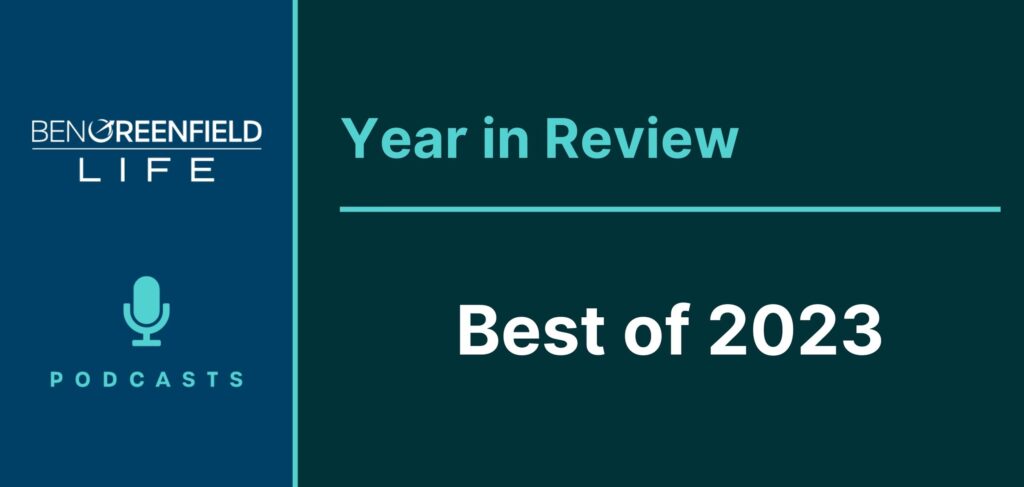September 22, 2020
Picture your body as a “battery.” If your daily requirements of essential minerals are being met, your battery can be said to be fully charged. If not, you could experience a number of mineral deficiency symptoms leaving you feeling “drained.”
This is because—as Robert Becker describes in his book, The Body Electric, and Jerry Tennant describes in his book, Healing Is Voltage—your body operates on electrochemical gradients, and consuming a full spectrum of minerals will allow you to maintain those proper electrochemical gradients.
For example, your cells operate best at a voltage range of approximately -30 to 70 mv, which is the equivalent of an average pH of around 7.35 (this is why, for optimal health, you need to be slightly alkaline). When cell voltage drops below -20 mv and pH drops, fatigue often occurs. Greater decreases can lead to chronic illness (i.e. cancer cells have a pH of about 6.3 or a voltage potential of about -40 mv). Chronic sympathetic nervous system stress, high toxin load, infections and injuries, and lack of electron-donors such as minerals can all contribute to this lack of potential.
While strategies I've discussed in the past—such as avoiding high intake of heavily acidic foods, grounding, sunlight, PEMF, and even swimming in salt-water such as the ocean or bathing in magnesium or Epsom salts—are all good ways to keep pH low and voltage potential high, it is that last point, specifically the electron-donating benefits of a consuming a full spectrum of minerals, that the focus of today's article will be on since it's a simple way to allow you to maintain proper electrochemical gradients. You'll also discover why you're probably deficient in key minerals, how certain minerals are used by your body, what common deficiency symptoms look like, the best way to test for deficiencies, and most important of all—how to recharge your battery with food, supplements, and more.
Why You're Probably Deficient In Key Minerals
Minerals originate from the earth and cannot be produced by living organisms, so your battery must be charged by obtaining them from your diet—directly from plants or indirectly from animals.
It is for this reason—because they must be acquired via diet—that minerals are considered essential for bodily function.
Required for human life and optimal performance, minerals are necessary for a wide variety of activities in your body—including proper functioning of organs and tissues, fluid balance, muscle contractions, making enzymes and hormones, and more. Unfortunately, mineral levels are low in just about everybody these days due to…
- Increased chronic stressors of modern life.
- Environmental pollution. Every day, you are faced with an onslaught of toxins—pollutants in the air, degraded plastic byproducts in drinking water, chemicals in cleaning products, pesticides in food, etc.—that further increase your body's needs for vitamins, minerals, and antioxidants.
- Modern harvesting, shipping, processing, and storage techniques of food, which degrades their nutrient content. Most soil these days is also depleted of nutrients, which decreases the beneficial vitamins, minerals, and antioxidants in conventionally-grown crops.
- An increased need for the mineral, lack of the mineral in your diet, or difficulty absorbing the mineral from food.
- Exercise. Yes, even something that's good for you can increase your body’s need for nutrients.
A deficiency in any one mineral can cause a cascading effect and quickly drain the level of your battery. Luckily, your body has its own ways of showing a “low charge,” (i.e. symptoms); additionally, there are highly accurate tests available that can help get to the root causes of any health issues or symptoms you may be experiencing as a result of a mineral deficiency.
Mineral Deficiency Symptoms
To understand why you may be deficient in key minerals, it makes sense to first take a deeper dive into some of the more common minerals and the functions they perform within your body.
Maybe you’ve been experiencing sore muscles or cramping, insomnia, brain fog, low metabolism, or weight gain. A mineral deficiency could certainly be the cause of any of these symptoms.
Minerals are generally divided into two groups (both of which are equally essential but required by the body in different amounts): major minerals (macrominerals required in large amounts) and trace minerals (microminerals required only in minute quantities).
Major minerals include calcium, magnesium, chloride, phosphorus, potassium, sodium, and sulfur. Trace minerals include iron, manganese, copper, iodine, zinc, fluoride, chromium, molybdenum, and selenium. Let's take a deeper look at what each of these minerals does and what deficiencies in them can present as in your body.
Major Minerals
- Calcium – Important for healthy bones and teeth, calcium helps muscles relax and contract and is important in nerve functioning, blood clotting, blood pressure regulation, and immune system health. Because your body carefully regulates the amount of calcium in your blood, a deficiency produces few obvious symptoms in the short term. Lack of calcium over the long term can lead to decreased bone mineral density called osteopenia.
Symptoms of a severe deficiency include muscle cramping, fatigue, poor appetite, and irregular heart rhythms.
- Magnesium – Found in bones, magnesium is needed for making protein, muscle contraction, nerve transmission, and immune system health. As you read this, you have about two ounces of magnesium in your body—mostly in muscle and bone tissue. Magnesium is responsible for over 700-800 important bodily functions and is essential for more than three hundred reactions, including nerve and cardiac function, muscle contraction and relaxation, protein formation, and the synthesis of ATP-based energy.
Symptoms for deficiency tend to relate to major basic body processes such as sleep, appetite, and muscular function. A magnesium deficiency can result in muscle cramping, excessive soreness, low muscular force production, disrupted recovery and sleep, immune system depression, and even potentially fatal heart arrhythmias during intense exercise.
- Chloride – An extremely important electrolyte, chloride helps keep the amount of fluid inside and outside your cells in balance. It also helps maintain blood pressure and volume and balances the pH of your body fluids.
Unfortunately, low chloride doesn't typically produce any noticeable symptoms. Some symptoms can include dehydration, diarrhea, or vomiting.
- Phosphorus – Important for healthy bones and teeth, phosphorus is found in every cell. It is part of the system that maintains acid-base balance. Calcium and phosphorus are closely related minerals that should be balanced. About 99 percent of calcium and 85 percent of phosphate occur in the skeleton as crystals of calcium phosphate.
You may experience a number of bone-related symptoms (bone pain, fragile bones, stiff joints) if you have a phosphorus deficiency. Other symptoms include anxiety, fatigue, irregular breathing, irritability, numbness, weakness, weight change, and loss of appetite—which can make it difficult to boost your phosphorus levels through a healthy diet.
- Potassium – A mineral that functions as an electrolyte, potassium is needed for proper fluid balance, transmission of nerve signals, and muscle contraction. The most common cause of potassium deficiency is excessive fluid loss. Examples can include extended vomiting, kidney disease, or the use of certain medications such as diuretics.
Symptoms of potassium deficiency include muscle cramping and weakness. Other symptoms show up as constipation, bloating, or abdominal pain caused by paralysis of the intestines. Severe potassium deficiency can cause paralysis of the muscles or irregular heart rhythms that may lead to death.
- Sodium – This mineral is needed for proper fluid balance, nerve transmission, and muscle contraction. Unintended consequences of a drastic reduction in sodium intake include insulin resistance (diabetes), metabolic syndrome, increased cardiovascular mortality and readmissions, cognition loss in neonates and older adults, unsteadiness, falls, fractures, and cravings for salty foods.
Symptoms of hyponatremia (low level of sodium in the blood) may include nausea, fatigue, headache or confusion, muscle cramps, restlessness, and weakness.
- Sulfur – Found in protein molecules, sulfur is important for detoxification, gut-lining integrity, lowering your risk of cancer, and oxidation reduction. But unfortunately, you may actually be “over-sulfured,” a concept explored in the book The Wildatarian Diet by Teri Cochrane, and this is further aggravated by the nearly inescapable presence of the chemical glyphosate on foods. Typically, sulfur reactions are due to a variation in CBS—not the TV channel but a gene family that provides instructions for the enzyme cystathionine beta-synthase, which plays an important role in the breakdown and metabolism of sulfur.
Some telltale signs of sulfur sensitivity include deleterious reactions to garlic, eggs, wine, and dried fruits that have sulfites added to them, along with joint pain, inflammatory bowel disease (Crohn’s disease and ulcerative colitis), irritable bowel syndrome, and neurotransmitter imbalances.
Trace Minerals
- Iron – Used by your body to make hemoglobin, which carries oxygen from your lungs to the rest of your body, iron is needed for energy metabolism. Iron is also necessary for the production of myoglobin, a protein that provides oxygen to your muscles.
Iron deficiency causes anemia (low hemoglobin and reduced numbers of red blood cells), which results in tiredness and shortness of breath because of poor oxygen delivery.
- Manganese – Part of many enzymes, manganese helps with protein and amino acid digestion and utilization, as well as the metabolism of cholesterol and carbohydrates.
Overall, manganese deficiency is not common, and there is more concern for toxicity related to manganese overexposure.
- Copper – Part of many enzymes and needed for iron metabolism, copper has profound relationships with a lot of different minerals including zinc, chromium, manganese, sulfur. Given these interrelationships, working to deal with copper dysregulation can be complicated.
Symptoms for deficiency tend to relate to immune system irregularity and low energy levels.
- Iodine – Found in thyroid hormone, iodine helps regulate growth, development, and metabolism. All the cells in your body contain and use iodine, and it is concentrated in the glandular systems of your body.
Symptoms of potential iodine deficiency include neck (thyroid region) swelling, unexpected weight gain, fatigue and weakness, hair loss, dry skin, changes in heart rate, trouble learning and remembering, and potential problems during pregnancy.
- Zinc – Part of many enzymes, zinc is needed for making protein and genetic material, and has a function in taste perception, wound healing, normal fetal development, production of sperm, normal growth and sexual maturation, immune system health.
Given its importance, there are many crucial symptoms for deficiency including diarrhea, reduced appetite, reduced testosterone, skin issues, smell and taste irregularities, stunted growth, and thinning hair.
- Fluoride – Found in your bones and teeth, fluoride is mainly used to improve dental health.
Fluoride deficiencies can present as badly formed or weak teeth, an increase in cavities, brittle bones, or fractured hips in the elderly. but overexposure to fluoride is perhaps more concerning. This can result in Fluorosis, a condition that causes yellow/dark brown tooth stains, surface irregularities, and pits in the teeth—making it important to never swallow fluoridated water, toothpaste, or mouthwash.
(Fluoride is no doubt a hot button topic these days, so if you really want to dig into the issue with fluoride, check out my Q&A podcast here or the books The Case Against Fluoride and The Fluoride Deception.)
- Chromium – Chromium assists with glucose metabolism, which is how you use carbohydrates as a fuel. It may also help to improve your insulin sensitivity. Basically, chromium is needed to properly convert the food you eat into energy.
Symptoms for deficiency in chromium tend to mimic those of diabetes, such as weight loss, impaired glucose tolerance, neuropathy, anxiety, fatigue, and muscle weakness.
- Molybdenum – Used to process proteins and genetic material such as DNA, molybdenum assists in detoxification by preventing toxins from building up in your body. It also activates certain enzymes that help break down harmful sulfites.
Because humans only need very small amounts (45 mcg), molybdenum deficiencies are extremely rare with only one documented case that occurred in a patient receiving IV nutrition.
- Selenium – Selenium is an important antioxidant that works with vitamin E to protect the immune system, heart, and liver, and may help prevent tumor formation. Selenium deficiency can cause an intolerance to high iodine.
The most common symptoms for deficiency are infertility in men and women, muscle weakness, fatigue, mental fog, hair loss, a weakened immune system, and cardiomyopathy.
How To Test For Mineral Deficiency
Unless you are a specimen of a human being operating at the pinnacle of health 24/7, you probably looked at some of these symptoms and thought “Fatigue, headaches, mental fog… Doesn't everybody experience these from time to time?”
This is where the importance of testing comes into play. The only surefire way to know whether your headache is from a stressful day at the office or a sodium deficiency is by getting tested.
The two most common ways to test for mineral deficiencies are blood testing and hair mineral analysis (use code BEN15 to save 15%). While blood tests show the recent and current body status, hair represents a longer time frame; and since the elements are present in the hair at higher levels, more sensitive and incredibly comprehensive results can be expected. Hair testing is much more indicative of your actual day to day health (an inch of hair provides a three-month average of what's depositing into the hair), as opposed to one blood draw on a given day, as you may have done in the past.
Equipment for hair mineral analysis is also incredibly precise—in the lab, the hair is burnt in a mass spectrometer (science used by NASA to evaluate moon rocks and things of that nature), which lends to a level of precision that is not currently possible with blood testing. While there are not any really strong studies that show the validity and accuracy of hair mineral analysis, there have been evaluations of commercial laboratories performing hair mineral analysis. Although it has its limitations, there are thousands of people using hair mineral analysis and seeing amazing results.
One thing to note if you do explore hair testing is that many of the results may be counter-intuitive at first glance. When you see high levels of something in the hair, that doesn't necessarily mean that you have it in your body. It instead means that your cells might be releasing it. For example, if you look at the test results and see magnesium off the charts in the hair, it can mean that the cells themselves are actually at a magnesium deficit. If you are an athlete that puts your body under a lot of stress, the hair test might show high levels of calcium, magnesium, sodium, or potassium (indicators of how much stress you're putting your body under), showing up as a large deposit in the hair and a high level of these minerals.
If you are interested in getting a hair mineral analysis, be sure to listen to my recent podcast “The Problem With Mineral Supplements, Why Minerals Don’t Get Absorbed, Why You Probably Have A Mineral Deficiency & What To Do About It.” for more information.
Solutions For Mineral Deficiencies
Knowing you're deficient in one or more minerals is an important first step in optimizing your health, but where do you go from there?
In the section below, you'll discover foods you could incorporate into your diet to increase your intake of certain minerals (which I believe should be your first plan of attack in fixing a mineral deficiency), as well as supplement and transdermal solutions.
The handy chart below has corresponding dietary sources to address various common mineral deficiencies. It was adapted from “What Do Food Cravings Mean? 21 Common Food Cravings And What You Can Do About Them.,” which I recommend checking out to see how various nutrient deficiencies may present in your body as food cravings.
| Deficiency | Restore With |
| Calcium | Sesame seeds/tahini, broccoli, kale, legumes, mustard, turnip greens |
| Chromium | Onions, romaine, tomato, cinnamon, grapes, apples, sweet potatoes |
| Iron | Beans, legumes, prunes, figs, seaweed, spinach, cherries |
| Chloride | Celery, olives, tomato, kelp, Colima sea salt |
| Magnesium | Raw cacao nibs/beans/powder, whole grains, beans, nuts, seeds, greens, fruit |
| Sulfur | Cruciferous vegetables (kale, cabbage, etc.), cranberries, horseradish, asparagus, carob powder, garlic, onions |
| Phosphorus | Whole grains, pinto beans, pumpkin seeds, brazil nuts, lentils |
| Sodium | Colima sea salt |
| Potassium | Citrus fruits, bitter green leafy vegetables, bananas, tomatoes, pineapple, black olives, seaweed |
| Manganese | Walnuts, almonds, pecans, whole grains, green leafy vegetables, pineapple, blueberries |
You may be wondering, “But aren't there minerals in my water?”
Unless you're drinking from your own well or relying upon mineral water such as Pellegrino (my personal favorite), Perrier, or Gerolsteiner—your bottled, filtered, or tap water is often stripped of precious minerals. If it does indeed contain adequate minerals, these are typically accompanied by enormous levels of fluoride and chlorine. So this means that unless you want to spend lots and lots of money on fancy water, you are stuck in a situation where you must filter your water to get rid of the dangerous stuff, then figure out other methods, such as supplementation, to get the minerals you'd normally be getting from the water.
Unfortunately, when you use something like a reverse osmosis system, the good minerals such as calcium, magnesium, and potassium are filtered out along with the bad minerals like fluoride. In addition to depleting your body of precious electrolytes, demineralized water is also more acidic. Listen to “Water & Water Filtration: Everything You Need To Know About Water Filters, Alkaline Water, Structured Water, Hydrogen-Rich Water, Deuterium-Depleted Water & Much More!” and “Why Water, Sunlight, Grounding & Relationships Are The Keys To Your Health & How To Feed, Clean & Protect Your Body Forever: An Interview With Ben Greenfield’s Father Gary Greenfield” for more on healthy water.
Luckily, it's fairly easy to fortify your filtered water with minerals. QuintEssential® Hypertonic Elixir (use code GREENFIELD10 to save 10%) allows you to transform your water closer to its natural state with micro-filtered seawater containing 78 essential minerals and trace elements. Using a good sea salt liberally, or making Hunza water (instructions below) are also great ways to re-mineralize filtered water.
Approximately 75% of the population is magnesium deficient. This is especially true for active individuals, who tend to be deficient in calcium as well. During exercise, energy is produced by the conversion of fatty acids and amino acids with calcium-dependent enzymes, and (if deficient) magnesium should always accompany calcium in an approximate ratio of 1:2 prior to a workout. Since the absorption of both magnesium and calcium is enhanced by consumption with food, your pre-workout meal is the perfect time for the intake of these two minerals. Both calcium and magnesium can also assist with sleep and muscle relaxation, so prior to bed or with dinner, additional magnesium supplementation can be beneficial.
What about calcium?
I personally don't use calcium and don't really recommend you take it if you're already eating a well-rounded diet. This is because most calcium supplements are only absorbed 4%-15% and the other 85%-96% deposits in various parts of your body. These deposits create gall stones, kidney stones, heel spurs, atherosclerotic calcium plaques, and breast calcifications. It’s the calcium deposits that are the problem. If these supplements were 100% absorbed we wouldn’t need so much and there would be nothing left over to cause problems. Instead of taking calcium supplements, I suggest eating the calcium-rich foods highlighted in the chart above (sesame seeds/ tahini, broccoli, kale, legumes, mustard, and turnip greens).
Another effective way to get magnesium is transdermally. There are a few different ways to deliver magnesium transdermally—the one you are likely familiar with being an Epsom salt bath, which delivers magnesium sulfate. However, magnesium chloride is even more effective at relaxing your body and soothing sore muscles than magnesium sulfate. An average magnesium chloride bath will deliver about 500mg of magnesium. Alternatively, if you don't want to hop in a full bath, after a long run or ride, you can simply soak your feet in a magnesium chloride footbath or use a topical magnesium chloride spray. I personally use 8-10 sprays each on my shoulders, arms, and legs prior to a race or hard workout, and do the same post-workout. Make sure that your skin is dry before applying the spray, and lightly rub the magnesium in after applying. Magnesium spray may cause a tingling or slightly annoying burning sensation. This is normal and usually subsides with repeated use.
If you do find that you are deficient in a particular mineral, don't simply run to your closest grocery store and pick up a magnesium or calcium supplement off the shelf as these are most likely going to be as effective as a sugar pill. For magnesium, the brands I've found to be most efficacious are BioOptimizers Magnesium Breakthrough, which contains all 7 different forms of magnesium (use code GREENFIELD10 to save 10%), and MagSRT® Time-Release Magnesium (You can learn all about MagSRT on this podcast with Thomas DeLauer.)
Another company I recommend that uses nanotechnology to make their supplements highly absorbable (up to 99.9% bioavailable) is Upgraded Formulas (use code BEN15 to save 15%). You can learn more about this relatively new technology and what makes their mineral supplements far more superior to most others on the market by listening to my podcast with their founder, Barton Scott, here.
Summary
If you struggle with poor sleep, less-than-stellar workouts, brain fog, appetite cravings, sore joints, or other “mysterious” issues, a mineral deficiency may be to blame.
A hair mineral analysis test is a good option to take away the guesswork and help to elucidate deficiencies that you can then work to address through diet, supplementation, or transdermal application.
In the meantime, one thing you can do today is make your own Hunza Water—an alkaline and ionized water made with salt crystals exposed to the sun. Simply fill a sterilized, clear glass container with the highest quality drinking water and place it in an area where it's exposed to as much sunlight as possible. Do the same with a jar of sea salt (about a quarter of the way filled), and once they've both been exposed to the sun for a full day, pour the water over the salt. Drink one teaspoon of this mixture in your regular water every day, and the result is amazing hydration, glorious bowel movements, and limitless energy.
To dive deeper into minerals, mineral supplementation, and mineral water, check out the following podcasts and articles as well as my book, Boundless:
- The Problem With Mineral Supplements, Why Minerals Don’t Get Absorbed, Why You Probably Have A Mineral Deficiency & What To Do About It.
- Water & Water Filtration: Everything You Need To Know About Water Filters, Alkaline Water, Structured Water, Hydrogen-Rich Water, Deuterium-Depleted Water & Much More!
- Supplements Update: What Supplements Does Ben Greenfield Take (& How To Time / Choose Your Personal Supplementation Protocol).
- Everything You Need To Know About How To Use Hydrogen Water: Timing, Dosing, Delivery Mechanisms, Hydrogen Tablets, Hydrogen Water Machines, Hydrogen Inhalers & Much More!
- Magnesium Supplementation: Everything You Need To Know About Dosing Magnesium, Timing Magnesium, Forms Of Magnesium & More!
How about you? Have you had your mineral levels tested, or tried to increase your mineral intake through diet, supplementation, or transdermal methods? Let me know what's worked for you, and as always, leave your thoughts, comments, and questions below.














Curious about Boron. Seems to be a very important mineral that’s actually pretty well researched.
Thanks!
“I personally don’t use calcium and don’t really recommend you take it if you’re already eating a well-rounded diet. This is because most calcium supplements are only absorbed 4%-15% and the other 85%-96% deposits in various parts of your body. These deposits create gall stones, kidney stones, heel spurs, atherosclerotic calcium plaques, and breast calcifications.”
Any links to back this up?
Broccoli and tahini isn’t gonna get the 1000+ mg of calcium recommended by the RDI, and athletes especially are recommended to take calcium supplements.
Super curious to hear more about your thoughts on this, Ben
Code BEN15 doesn’t work.
After reading the list of mineral-restoring foods here, you would think that only plants provide minerals.
My thoughts exactly! Where are the animal sources?